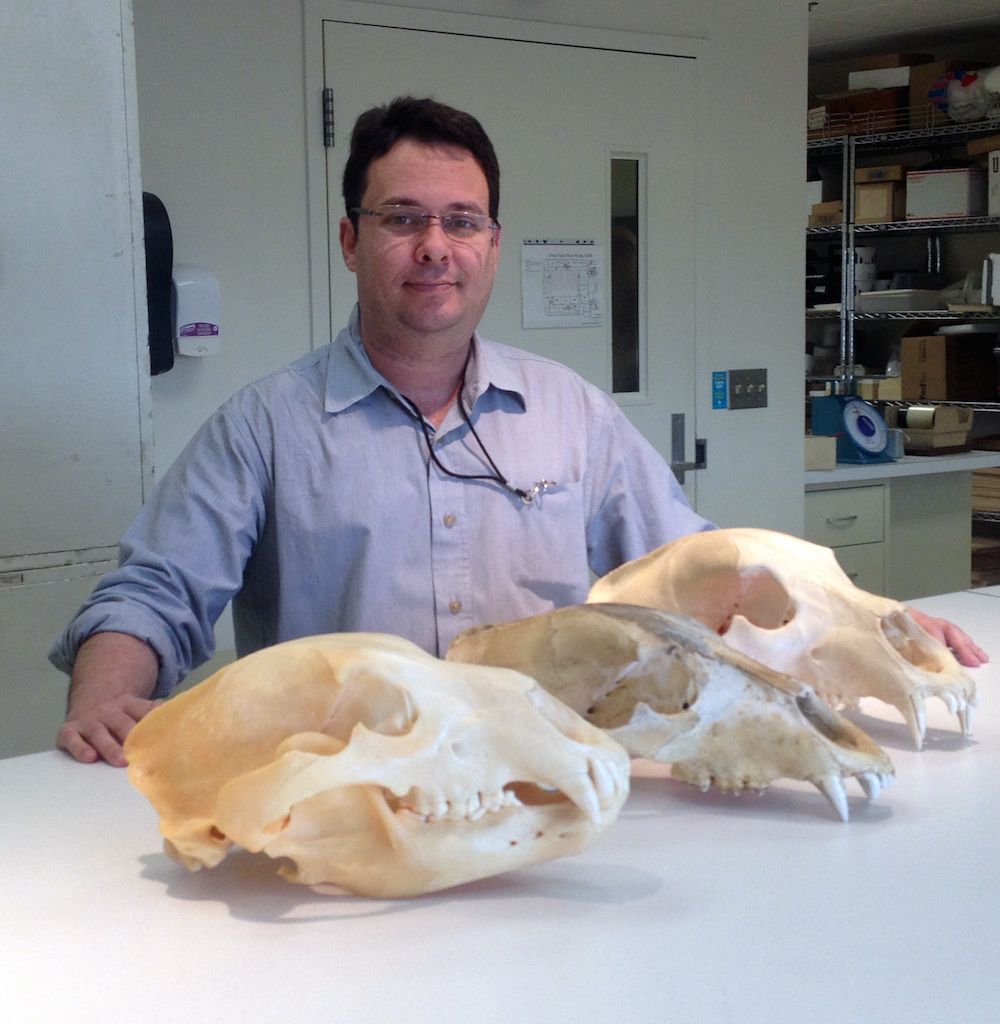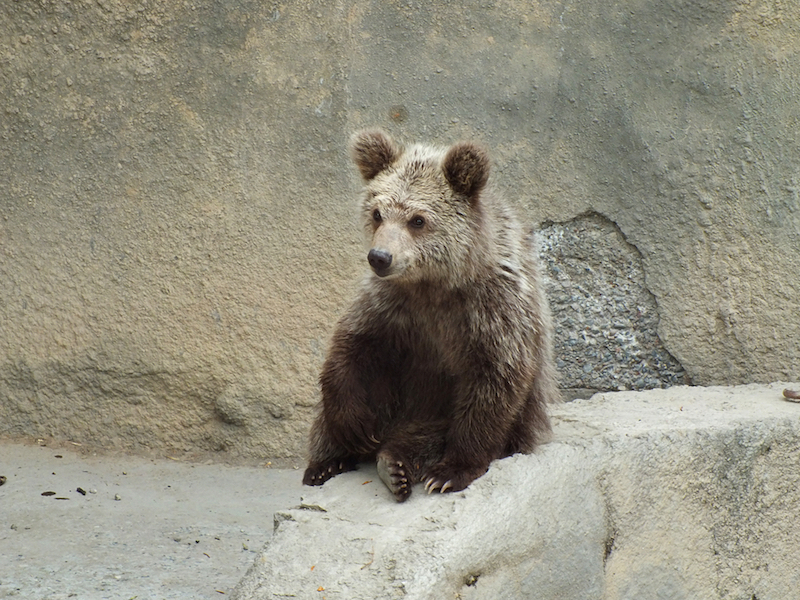Yeti Debate Swirls: Study Reveals Origin of Mysterious Hairs

The yeti, a legendary shaggy, bipedal beast from the Himalayas, made headlines last year when a geneticist said he had solved the mystery of its origins. But now, scientists have found the hair samples used in that study didn't come from a mysterious animal, but rather from the Himalayan brown bear.
"There is essentially no reason to believe that they [the hairs] belong to a species other than the brown bear," said one the new study's researchers, Eliécer Gutiérrez, a postdoctoral fellow of evolutionary biology at the Smithsonian's National Museum of Natural History in Washington, D.C.
Gutiérrez and a colleague re-examined a finding reported in 2014 in which geneticist Bryan Sykes and his colleagues looked at two hair samples from the Himalayan region: One sample came from an aggressive animal walking on its hind legs that was shot by a hunter about 40 years ago in northern India; the other had been found in Bhutan in a high-altitude bamboo forest, according to that study, published in the journal the Proceedings of The Royal Society B.
After a genetic analysis, Sykes' team said they had linked the "yeti" hair samples to the jawbone of an ancient polar bear (Ursus maritimus) that lived in Norway. It's likely the hairs came from "a previously unrecognized bear species," living in the Himalayas, the researchers wrote in the study. In fact, the species may have been a hybrid descendent of U. maritimus and the brown bear (Ursus arctos) of the Himalayas, the researchers said. [Rumor or Reality: The 10 Creatures of Cryptozoology]
Perhaps this unknown bear inspired the legend of the yeti, the researchers said in the study.
But Gutiérrez said he became skeptical of the study when he noticed the researchers only used a fragment of a gene to identify the species. He and a colleague looked up the genetic sequence of the two hair samples in GenBank, a database of publicly available DNA sequences.
"We made this discovery that basically that fragment of DNA is not informative to tell apart two species of bears: the brown bear and [modern-day Alaskan] polar bear," Gutiérrez told Live Science. The polar bear does not live in the Himalayas, so the hair samples likely belong to the Himalayan brown bear, he said.
Sign up for the Live Science daily newsletter now
Get the world’s most fascinating discoveries delivered straight to your inbox.
The new study is the second to discredit the 2014 research. In a 2014 letter published in the same journal, two researchers also showed Sykes' team had not sufficiently analyzed their "yeti" data.
"Once they had determined that two of their samples were a match to a polar bear, they should have run further analyses on the extracted DNA to look at other regions of the mitochondrial genome [DNA passed down by the mother] in order to double-check this controversial result," said one of the letter's authors, Ceiridwen Edwards, a researcher in ancient DNA studies at the University of Oxford in the United Kingdom.
"Instead, after (incorrectly) establishing a direct link to a 40,000-year-old polar bear sequence, they then used this misinformation in the publicity for the paper," Edwards told Live Science in an email.
A researcher responds
Still, the new study doesn't discount his 2014 finding, said Sykes, a professor of human genetics at the University of Oxford. [Image Gallery: 'Yeti Footprint' Photos Up for Auction]
"What mattered most to us was that these two hairs were definitely not from unknown primates," Sykes told Live Science in an email. "The explanation by Gutiérrez and [Ronald] Pine might be right, or it might not be."

The only way to get to the bottom of the case is to find "fresh material" from an animal to see if it matches the genetic fragment they studied for the 2014 paper, Sykes said.
"The real heroes of the piece are the people who actually went to the Himalayas, spoke to the local people, found these hairs and then contributed them to the study," Sykes said. "This is the Himalayas, not Central Park."
He added that his book on the yeti project, "The Nature of the Beast" will be published by Coronet on April 9, and will contain additional details about his efforts to learn more about the animal behind the legend.
In spite of the new study, the public will likely continue to believe in the yeti, said Daniel Loxton, an editor of Junior Skeptic, a website published by the Skeptics Society, an educational nonprofit.
"People are fascinated by monsters, and they're fascinated by mysteries in general," Loxton said.
The yeti is especially puzzling because there are multiple cultures and languages in the Himalayas, making it difficult "to disentangle Western folklore from local legend from genuine anthropological or zoological fact on the ground," Loxton said.
It's common for people to mistake a bear for a yeti, particularly a Himalayan brown bear, as this bear can walk on its hind legs, he said. But, just like the Loch Ness monster, people will probably continue to believe in the yeti legend.
"Loch Ness is not as big as the Himalayas," Loxton said. "It is a finite body of water. It has been extensively scanned by sonar. It's been observed for decades. There's just really no possibility that there's a plesiosaur in Loch Ness, or even anything of comparable size."
"But people aren't giving up on the Loch Ness monster," he said. "I don't think they ever will. So I think the yeti will probably exist as long as there are people to think about mountains."
The study was published online today (March 16) in the journal ZooKeys.
Follow Laura Geggel on Twitter @LauraGeggel. Follow Live Science @livescience, Facebook & Google+. Original article on Live Science.

Laura is the archaeology and Life's Little Mysteries editor at Live Science. She also reports on general science, including paleontology. Her work has appeared in The New York Times, Scholastic, Popular Science and Spectrum, a site on autism research. She has won multiple awards from the Society of Professional Journalists and the Washington Newspaper Publishers Association for her reporting at a weekly newspaper near Seattle. Laura holds a bachelor's degree in English literature and psychology from Washington University in St. Louis and a master's degree in science writing from NYU.









